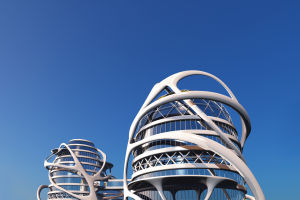The concept of an overpass has been around for centuries, a bridge-like structure that allows a road or railroad to cross another road or railroad without intersecting. The earliest known overpass was built in ancient Rome, called Pons Aemilius, and was completed in 142 BC.
However, the modern overpass as we know it today was originally developed in the early 20th century as part of the development of the automobile and the need to separate different modes of transportation. The first modern overpass was completed in Denver, Colorado, USA in 1913. Known as the Speer Boulevard Viaduct, it was designed to allow traffic to flow over the Platte River and across the city's railroad tracks.
Since then, flyovers have become an integral part of modern transportation infrastructure, found in towns and cities around the world. They are built to ease traffic congestion, increase safety, and increase the efficiency of the transportation system.
There are many overpasses around the world that are famous for various reasons.
1. Golden Gate Bridge: Located in San Francisco, California, USA, the Golden Gate Bridge is one of the most iconic bridges in the world. It straddles the Golden Gate Strait, connecting San Francisco and Marin County, and is a suspension bridge as well as an overpass. Completed in 1937, it is a popular tourist attraction and a symbol of the city.
2. Nanpu Bridge: The Nanpu Bridge in Shanghai, China is a cable-stayed overpass spanning the Huangpu River. It is known for its unique design, with a large circular intersection at one end that allows traffic to flow in and out of the bridge smoothly. Completed in 1991, it has become a symbol of the city's rapid modernization.
3. Ponte Vecchio: The Ponte Vecchio in Florence, Italy is a historic overpass spanning the Arno River. It is known for its unique architecture, which features shops built along the edge of the bridge. It was originally built in Roman times and has been rebuilt many times throughout history.
4. Sheikh Zayed Bridge: Located in Abu Dhabi, United Arab Emirates, the Sheikh Zayed Bridge is a cable-stayed overpass across the Maiqta Strait. It is known for its unique design, which features a series of arches that resemble undulating waves. Completed in 2010, it has become a symbol of the city's modernity and ambition.
These are just a few examples of overpasses from around the world known for their unique design or historical significance.
The establishment of the overpass has brought great convenience, and its benefits are many.
1. Increased safety: One of the main benefits of building flyovers is increased safety. By separating different modes of transportation, such as cars and pedestrians, flyovers can reduce the risk of accidents and improve overall safety for everyone on the road.
2. Reduce traffic congestion: Interchanges can also help reduce traffic congestion by allowing traffic to flow more smoothly and without interruption. This is especially important in areas with heavy traffic or where there are frequent delays due to trains or other obstacles.
3. Increased efficiency: An overpass can also increase the efficiency of the transportation system by allowing vehicles and other vehicles to move faster and without interruption. This is especially important for emergency vehicles that need to get to their destination quickly.
4. Improved accessibility: Interchanges can also improve accessibility by making it easier for people to reach their destinations, especially in urban areas where there may be multiple layers of transportation infrastructure.
5. Economic Benefits: The construction of flyovers can also generate economic benefits by improving access to businesses and other destinations, which can help stimulate economic development and growth.
Collectively, flyovers can be an important tool in improving transportation infrastructure and helping create safer, more efficient, and more accessible communities.


